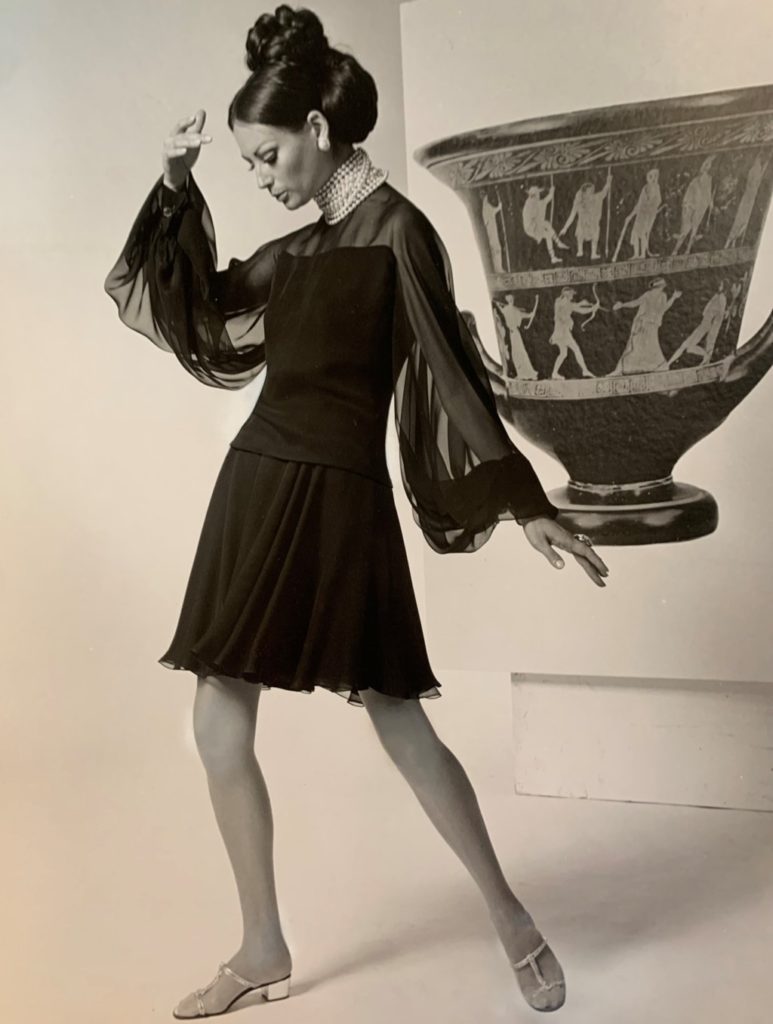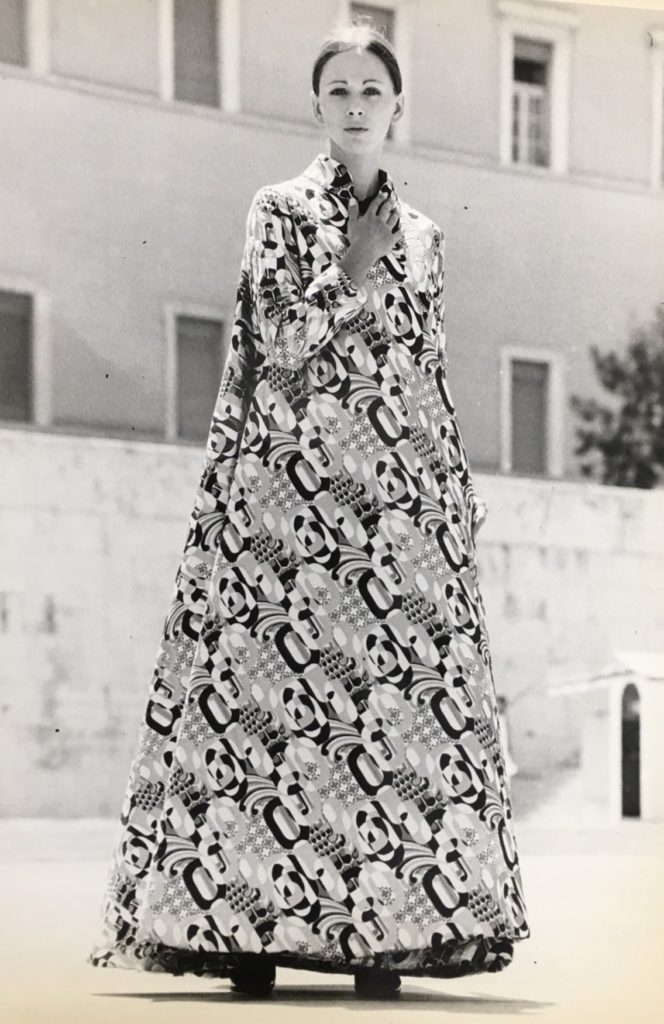By Abigail Rodriguez, Monday, March 28, 2022
This essay is written as an assignment for the AHMP senior class “Exhibitions” project ΜΟΔΑ IS FASHION. The exhibition is on display at the State University of New York’s FIT campus Gladys Marcus Library in Spring and Summer 2022.

The Special Collections and College Archives (SPARC) at FIT houses a large collection of archival materials including photo albums, sketchbooks and ephemera once owned by Greek fashion designer George Stavropoulos (1920–1990).
A prolific fashion designer, who owned an atelier in downtown Manhattan — Stavropoulos Corp. was on 16 West 57th Street, he crafted designs for many celebrities, including Maria Callas (1923–1977), Sophia Loren, and Emily-Angelica Papoulias, wife of the late Greek Ambassador to the United States, Georgios Papoulias (1927–2009). Stavropoulos clients included the New York Governor first lady Evangeline Gouletas, and Lady Bird Johnson. Today, his designs, especially his evening gowns, are held in collections at the Metropolitan Museum in New York and the Smithsonian Institution’s National Museum of American History in Washington, D.C., at Kent State University in Kent in Ohio, at the Benaki Museum in Athens in Greece, and elsewhere.
Stravropoulos’ journey into the fashion world began in Greece. Born in Tripoli on the Peloponnese he opened a boutique in Athens in 1949. According to Kasey Bland’s insightful biography, “throughout the 1950s Stavropoulos … […] … began creating designs inspired by classical Greek figures.” (In 2010, Bland curated an exhibition on Stavropoulos at Kent State University Museum).
Not only were his fashion designs inspired by his heritage, but so did his growing network of business contractors and clients continue to engage with ancient Mediterranean heritage. At some point, he was even honored for his work by the Greek embassy in Washington, D.C.
The unknown model in the photograph displayed in ΜΟΔΑ IS FASHION (Fig. 1), poses in a dress from the Stavropoulos Fall-Winter 1969–1970 collection. She stands in front of a large photograph of an ancient Mediterranean red-figured Greek calyx krater. Objects like these are on display in museums around the world such as the Metropolitan Museum of Art, in the British Museum in London and in the Louvre in Paris. Interestingly enough, one of the more iconic portraits of Stavropoulos himself preserved today features an ancient Greek vase in the background.
Promoting the same Fall Winter 1969–1970 collection, Stavropoulos’ models were also featured on the Acropolis in Athens and in the streets of the city by the Piraeus (Fig. 2).

Kasey Bland’s 2008 biography of the designer introduced a wealth of materials from the rich Kent State University Stavropoulos archives in Ohio. Bland was also able to conduct an interview with Stavropoulos’ son Peter.
The black evening dress in the photograph on display incorporates a see-through mesh material gliding smoothly, surrounding the model’s arms draping with ease. Stavropoulos’ style made women wearing hid dresses look soft, and he believed women should be able to move around in high-end dresses with grace.

The photograph on display in ΜΟΔΑ IS FASHION and other fashion photo shoots of Stavropoulos’ collections housed in SPARC emphasize the importance of his Greek heritage as a feature in the Stavropoulos brand and marketing. I myself am inspired by my own Mexican heritage and hope to become an advocate for my own culture one day.
Further Reading
Bland, Kasey. 2008. The Life and Career of Fashion Designer George Stavropoulos. Thesis, University of Akron.
Bender, Marylin. 1965. “Stavropoulos: A Greek Name to Drop,” The New York Times, July 10.
Schierup, Stine and Victoria Sabetai eds. 2014. The Regional Production of Red-Figure Pottery: Greece, Magna Graecia and Etruria. Aarhus: Aarhus University Press.
A collection of 150 dresses donated to Kent State University in Ohio and more material can be found here.
About the Author

Abigail Rodriguez is a senior in the AHMP program. Fascinated by the art history of Mexico, her goal is to work in an educational capacity in an art institution in the near future.
Current Favorite Reading or Art Exhibition
Japan: A History of Style, Metropolitan Museum of Art in New York City (March 8 to April 24, 2022).